In recent years, we have witnessed major and particularly destructive earthquakes: Morocco, Turkey, and Japan are just a few examples. In Israel, located on the Syrian-African Rift, a serious earthquake occurs approximately every hundred years, the last of which took place in 1927. Amid the chaos caused by an earthquake, alongside the potential physical and property damage, there is a need to build resilience and provide tools for emotional coping in the hours following the earthquake.
Fadel Senna /AFP - Getty Images
Anchor Point is an urban gathering station designed to help citizens cope and respond in the immediate aftermath of an earthquake. The stations are situated in urban areas and address people's emotional needs according to four principles of resilience-building:
Safe space | To enable people to cope with complex situations, they must first feel that they are in a safe place and not in danger.
Coherence | Creating order within the chaos. This is achieved by providing information and the ability to communicate with loved ones.
Control | A sense of control is achieved by using a person’s personal tools and resources and by performing important tasks relevant to the individual's capabilities.
Human connection | Working together towards common goals and showing empathy to those in the immediate environment.
Usage scenario
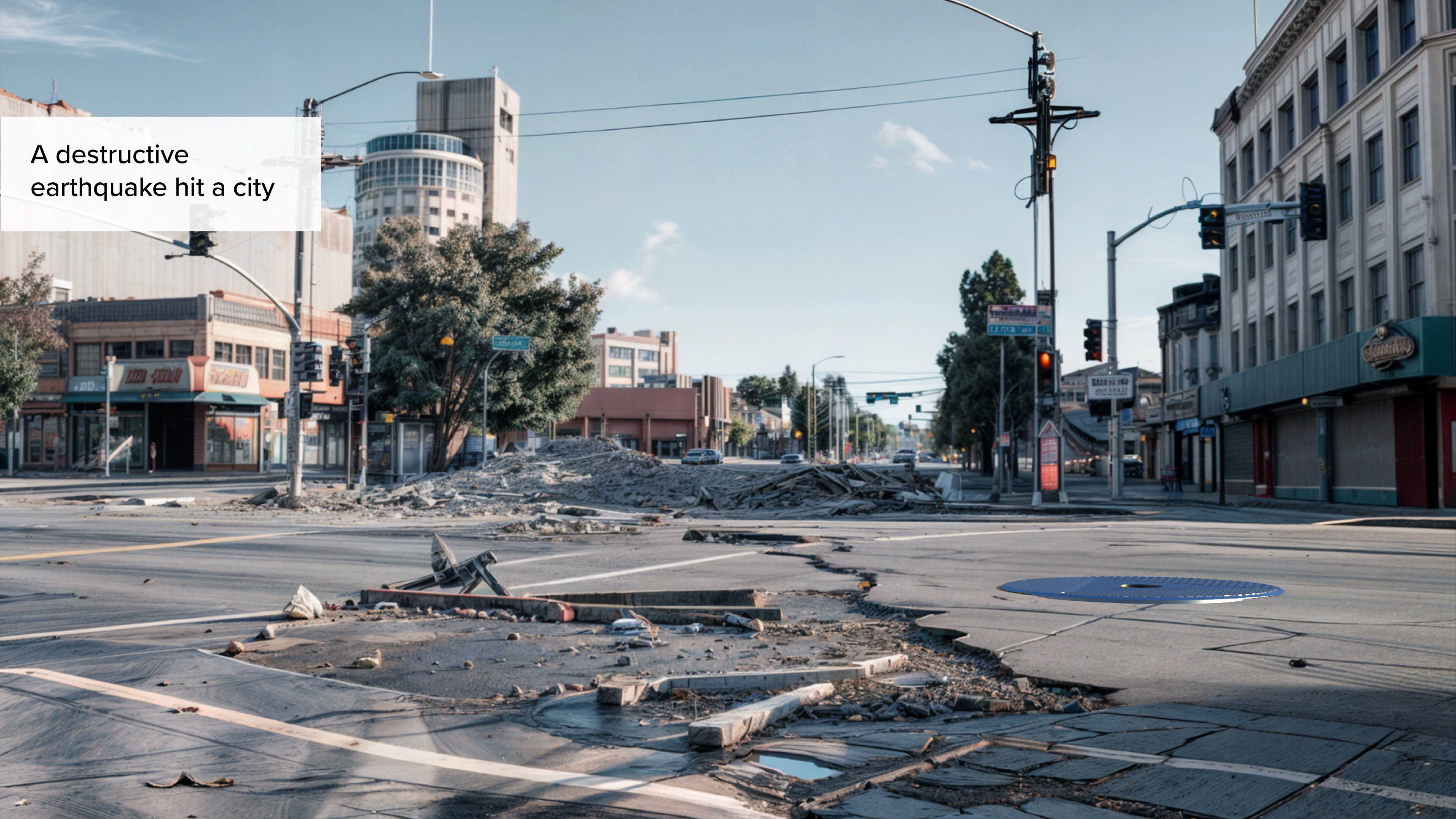
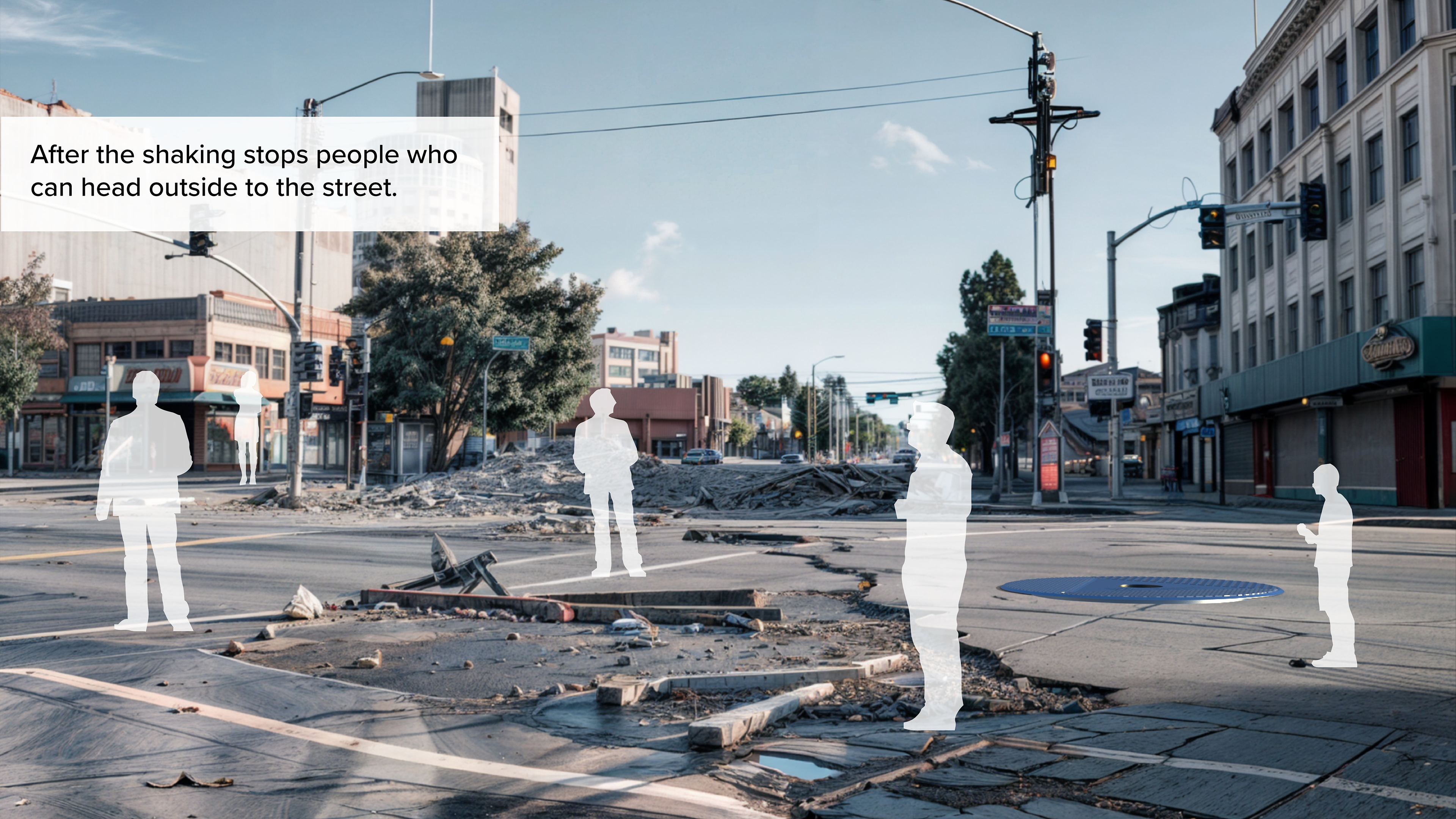



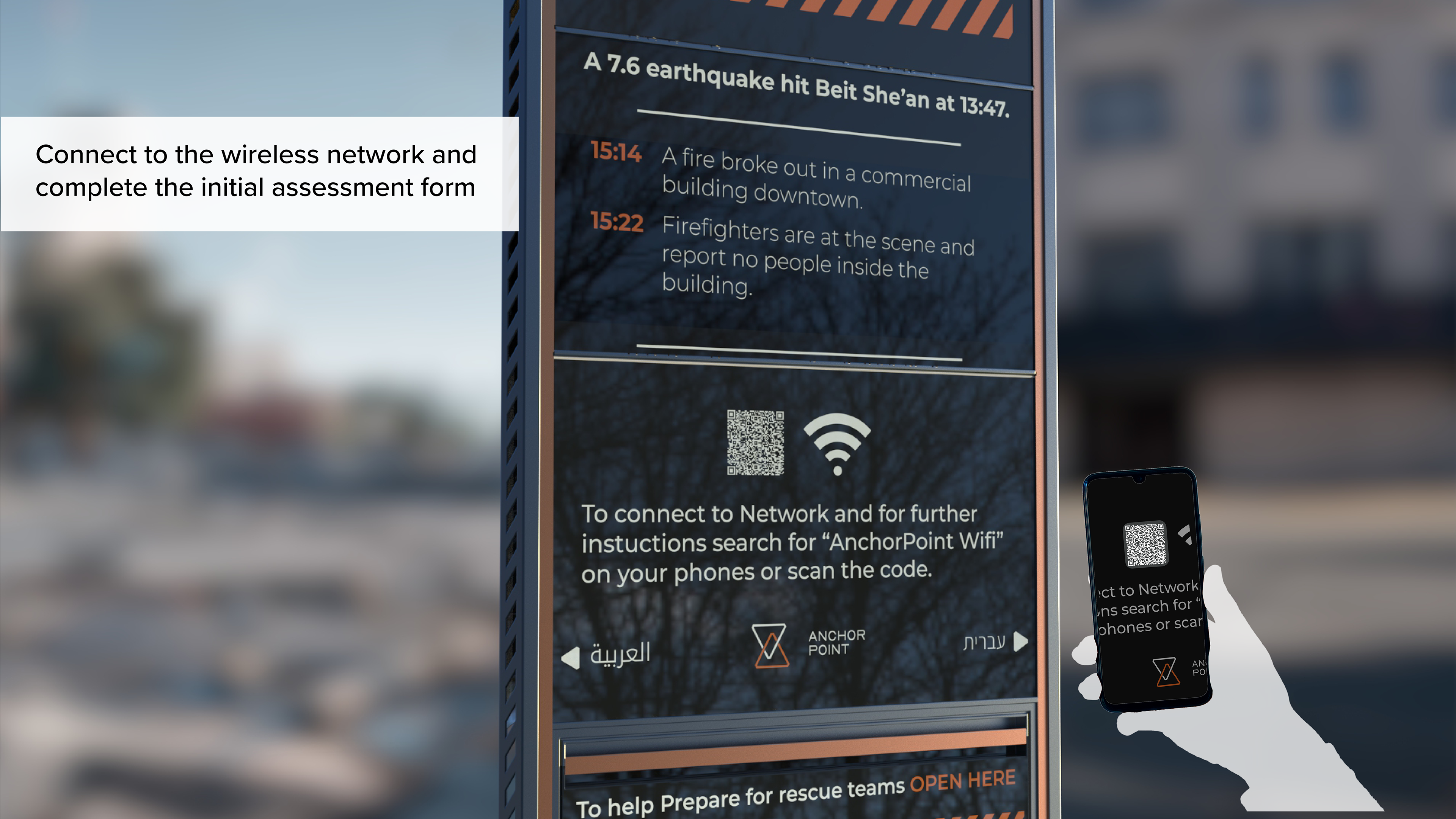
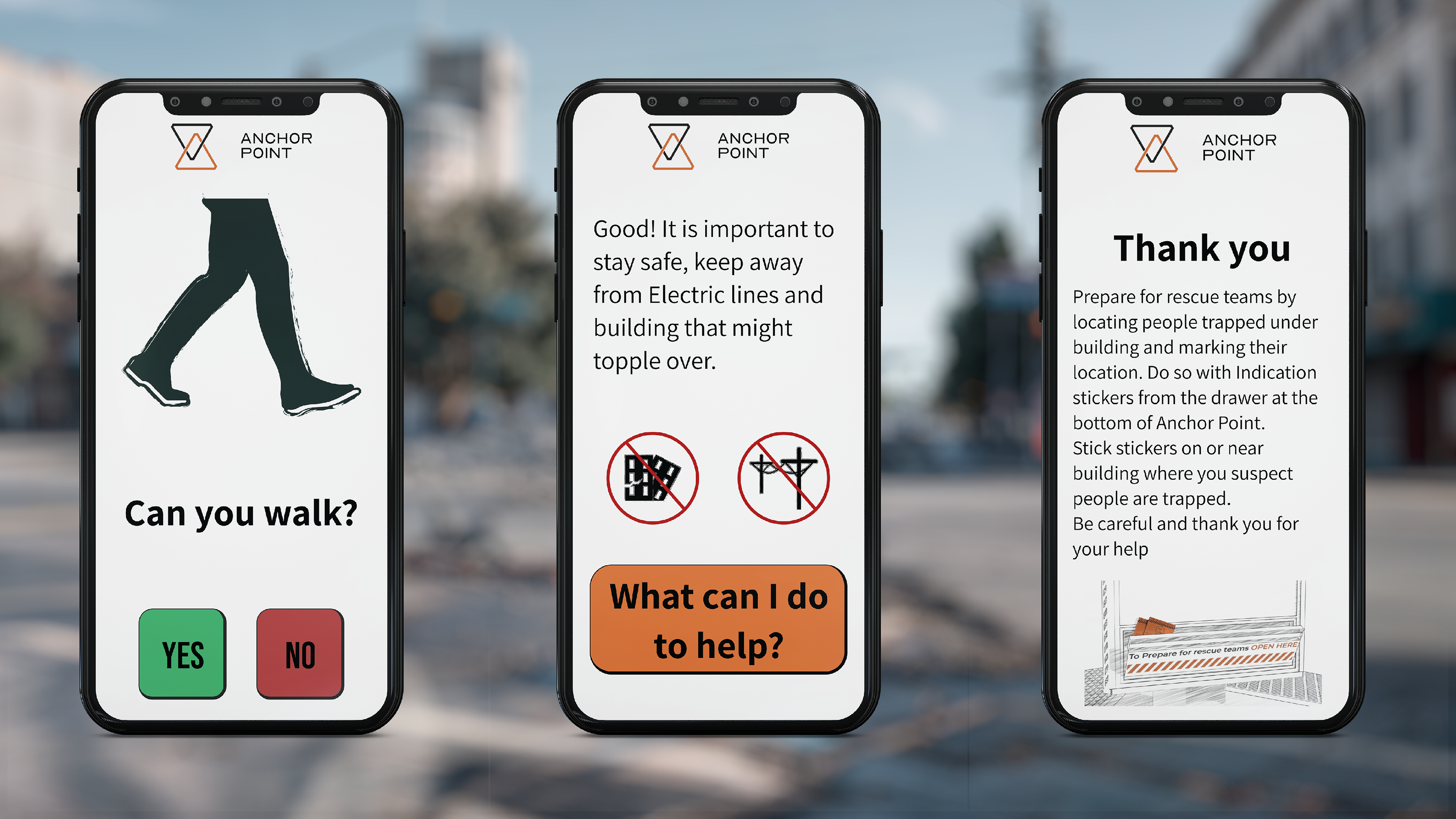
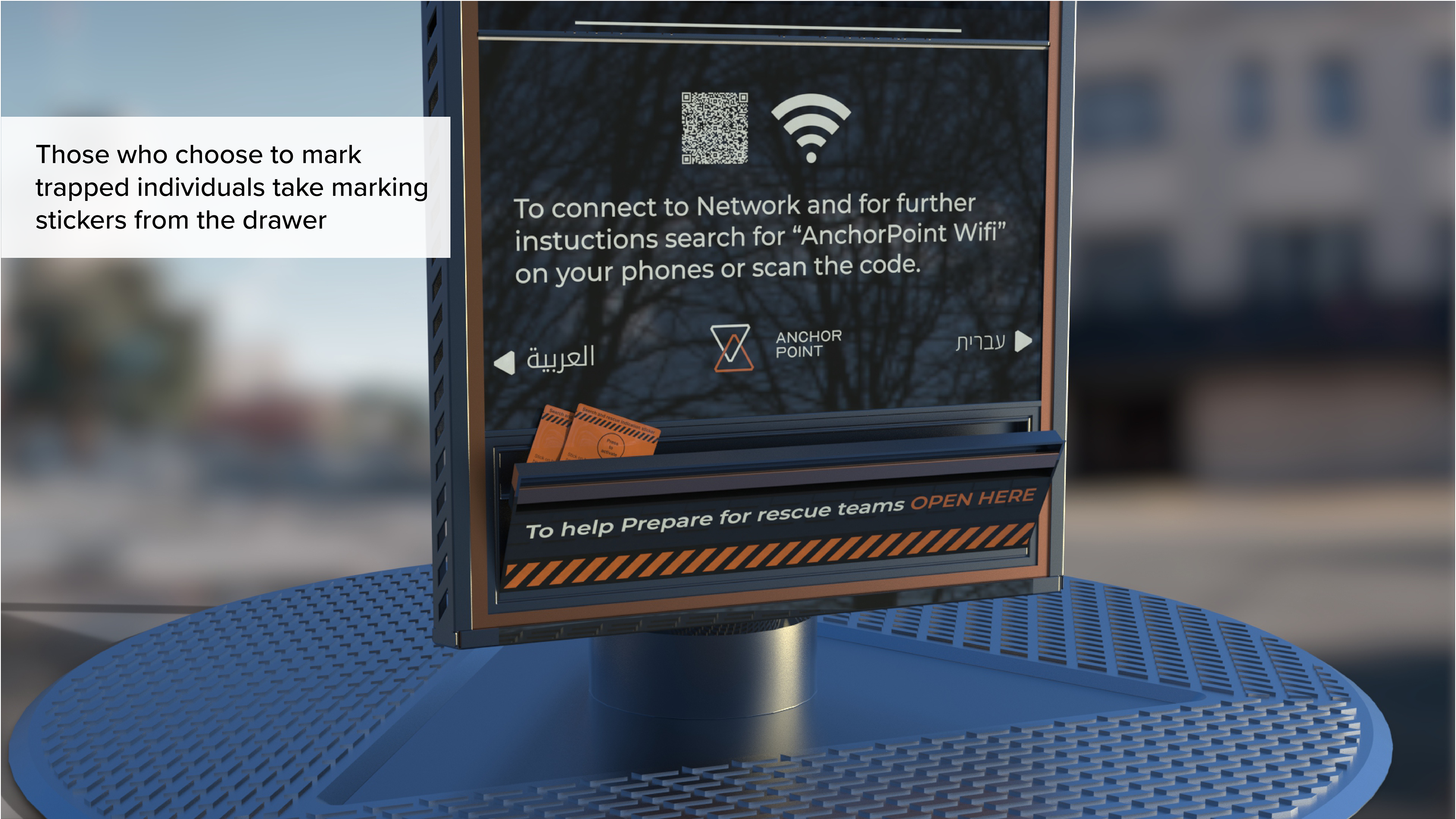

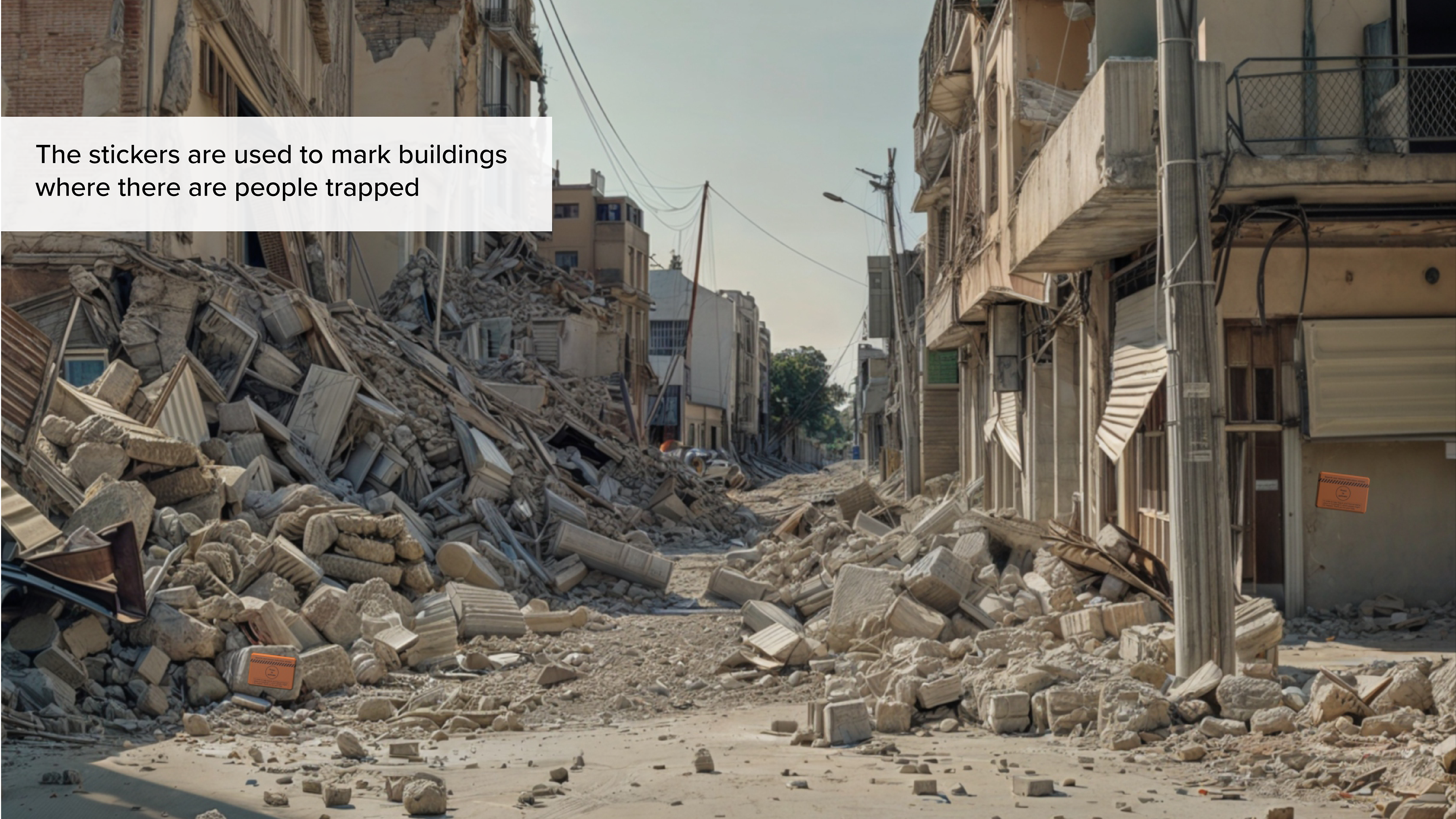

The location of the station, which is not adjacent to buildings or under power lines, is the safest place to stand. Gathering at the station creates a safe space.
Receiving information about the event and the ability to connect to the network and communicate with others create coherence.
Important actions, such as marking trapped individuals for the rescue teams, create a sense of control in the face of the traumatic event.
Gathering together and working collaboratively fosters human connection.



